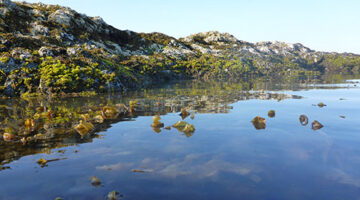The effect of distal-end trimming on Saccharina latissima morphology, composition, and productivity
Lead PI: Gretchen S. Grebe Authors: Gretchen S. Grebe, Carrie J. Byron, Damian C. Brady, Adam T. St. Gelais, Barry A. Costa-Pierce Date: 2021 Abstract: As kelp cultivation increases around the world, so does the need for farm management strategies that produce specific crop characteristics, optimize yield, widen harvesting windows, and prevent biomass loss. Distal-end trimming […]
Read more

